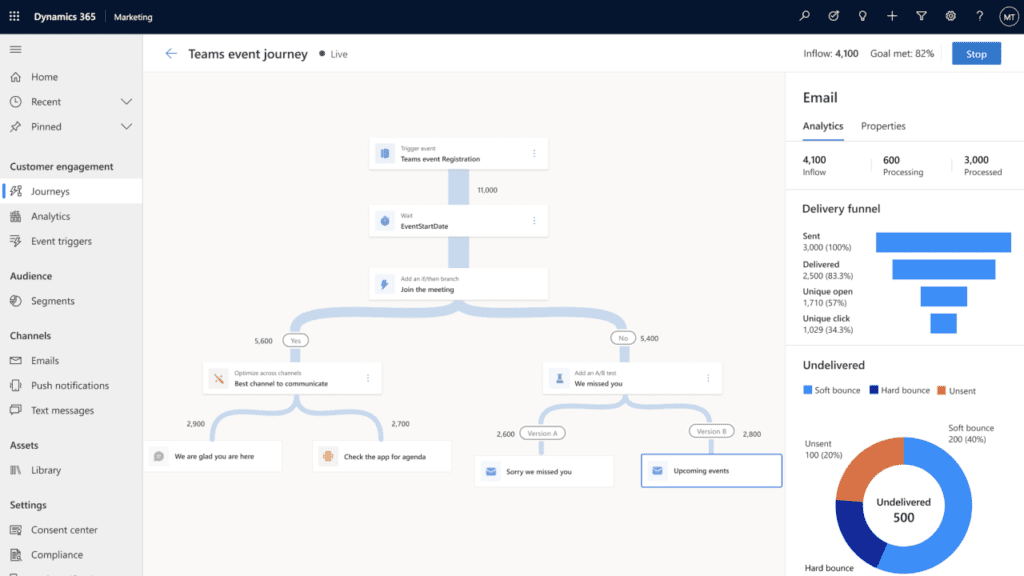
What is a customer data platform (CDP) and what are its benefits for businesses?
A Customer Data Platform (CDP) is software that businesses use to collect and manage customer data. By consolidating customer data from multiple sources into one central repository, businesses can gain a more complete picture of their customers and better understand their needs and preferences. In addition, CDPs can help businesses to segment their customers more accurately, identify opportunities for cross-selling and upselling, and create personalized marketing campaigns. As a result, CDPs can provide significant benefits for businesses in terms of customer acquisition and retention.
How does a CDP work, and what kind of data does it collect and manage?
A CDP is a software platform that collects and manages customer data, including demographic information and purchase histories. This data is then used to create comprehensive profiles about each customer. The goal of a CDP is to enable organizations to have a deeper understanding of their customers’ needs, preferences, and behaviors in order to better target them with relevant marketing messages and offers. By leveraging this knowledge, companies can gain more insight into what works (or doesn’t work) for various segments of their customer base, thereby improving the effectiveness of their campaigns. The collected data also provides essential feedback on product performance and service quality. In addition to collecting demographic information about customers, a CDP may also capture other types of data such as website engagement metrics, social media interactions, and detailed purchase histories. This data can then be used to create more personalized experiences for customers by providing them with tailored content that is relevant to their interests. CDPs are becoming increasingly popular as a way for businesses to better target and engage customers, resulting in improved customer loyalty and increased revenue.
In addition to collecting customer information, many CDPs also provide the ability to segment customers into different groups based on factors such as location, device type, or behavior. This allows organizations to tailor marketing messages to specific segments of their audience in order to drive higher engagement levels and conversions. By using a CDP, companies can take advantage of this segmentation capability without having to manually configure complex rules or analyze huge volumes of data. All of this ultimately helps to maximize revenue and improve customer satisfaction.
What industries are most suited to using a customer data platform CDP, and why is this so?
If you’re looking for a business partner that’s reliable, always up-to-date, and can help you segment your customers like never before, then look no further than a CDP. A “customer data platform” might not sound like the most exciting partner at first glance, but trust us – it’s worth getting to know one. Here are three industries we think are particularly well-suited to using a CDP, and why:
1. Retail: Retailers have long relied on customer data to segment their audiences and tailor their marketing messages accordingly. A CDP can take this to the next level by unifying customer data from multiple sources and making it easier to segment and target customers.
2. Healthcare: Healthcare organizations collect vast amounts of data on their patients, but this data is often siloed within different departments or systems. A CDP can help to unify this data and make it more accessible for things like population health management and precision medicine.
3. Travel and hospitality: The travel and hospitality industry is another one that relies heavily on customer data for things like targeted marketing and loyalty programs. A CDP can help travel and hospitality businesses keep track of customer preferences and better target their marketing efforts.
4. Financial services: Financial services are increasingly reliant on customer data to understand the needs of their customers and build personalized experiences. A CDP can help financial services firms consolidate customer data from multiple sources and make it easier to identify high-value prospects and target them with tailored offerings.
5. Education: Educational institutions need to be able to capture and analyze large amounts of student data in order to provide personalized learning experiences, track performance, and measure success. A CDP can help educational institutions collect, store, and manage all this data in one centralized location.
6. Media & Entertainment: The media & entertainment industry is highly competitive and reliant on understanding customer preferences in order to create compelling content that will keep viewers hooked
7. Automotive: With the rise of connected and autonomous vehicles, automotive companies need to collect and analyze vast amounts of data in order to create personalized driving experiences for their customers. A CDP can help them unify customer data from multiple sources and use it to offer more personalized services.
8. Telecommunications: Telecommunications companies need to be able to understand their customers’ usage patterns in order to provide better service plans and offers. A CDP can help these companies consolidate customer data from multiple sources, enabling them to better target their marketing campaigns and tailor their services accordingly.
9 E-commerce is another industry that stands to benefit greatly from the use of a CDP. By unifying customer data from multiple sources, a CDP can help e-commerce companies gain deeper insights into their customers’ preferences and behavior. This information can then be used to create personalized experiences across channels, such as websites, apps, emails, and more. A CDP can also help e-commerce companies segment customers in order to better target marketing campaigns and offer tailored discounts or promotions. Additionally, a CDP can provide valuable insights into customer journey analytics so companies can identify areas of improvement for the customer experience. All in all, utilizing a CDP can not only improve sales but also increase customer loyalty and retention rates for any e-commerce organization.
How do you go about choosing the right CDP for your business, and what factors should you consider when making this decision?
Deciding on a CDP can feel a lot like dating- there are a ton of options out there, and it’s hard to know which one is right for you. However, unlike dating, you can’t just go with your gut when choosing a CDP. You need to consider your specific business needs and objectives, and how the CDP will help you meet those goals. To make the process easier, start by creating a list of must-haves and nice-to-haves. Must-haves are features that are absolutely essential for your business, while nice-to-haves are features that would be helpful but are not dealbreakers. Once you have your list, you can start narrowing down your options. Another important factor to consider is price. While you don’t want to skimp on quality, you also don’t want to overspend on features that you’ll never use. By taking the time to do your research and consider all of your options, you’ll be able to find the perfect CDP for your business.
1. Microsoft Dynamics 365 CDP
Microsoft Dynamics 365 Customer Data Platform (CDP) is a cloud-based platform that enables organizations to create and manage comprehensive customer data profiles. This platform provides actionable insights into customers, allowing companies to build personalized experiences tailored to the needs and behavior of their target audiences. CDP allows businesses to collect, store, integrate, and analyze all of their customer data from multiple sources in one central place. With this platform, companies can create segmentations based on different criteria such as demographics or interests so they can better understand how their customers behave. Additionally, it helps them identify key opportunities for growth and develop more effective marketing strategies. Furthermore, with the help of predictive analytics and machine learning algorithms, CDP helps organizations optimize sales processes and uncover hidden trends in customer data. Finally, CDP is an ideal platform for companies looking to build loyalty and trust with their clients by providing them with a personalized experience.

Benefits of Microsoft Dynamics 365 CDP
Microsoft Dynamics 365 Customer Data Platform (CDP) provides organizations with numerous benefits that can help them better understand their customers, optimize sales processes, and create a more personalized user experience. Some of the key advantages of using this platform include:
– Increased Customer Insights – With CDP, businesses have access to comprehensive customer profiles which allow them to gain valuable insights into customer behaviors and preferences. This can help companies develop more effective marketing strategies and optimize sales processes accordingly.
– Improved Targeting – By leveraging the predictive capabilities of CDP, organizations can create more accurate segmentations and target offers that are tailored to the needs of their customers.
– Enhanced User Experience – With CDP, businesses can use customer data to personalize webpages and content, creating a more engaging experience for their customers. Additionally, this platform can help them generate personalized recommendations which can lead to increased customer satisfaction.
– Cost Savings – By integrating all customer data into one central location, companies can reduce costs associated with manual processes and improve efficiency across departments. Furthermore, CDP allows businesses to automate tasks such as segmentation or targeting which helps save time and money in the long run.
Overall, Microsoft Dynamics 365 Customer Data Platform (CDP) is an incredibly powerful platform that can help organizations gain valuable insights into their customers and deliver more personalized experiences. This platform can provide numerous benefits to companies of any size, allowing them to leverage customer data in order to optimize sales processes and create a more engaging user experience.
In conclusion, Microsoft Dynamics 365 Customer Data Platform (CDP) is an excellent platform for businesses looking to improve their marketing efforts and better understand their customers. With its predictive analytics capabilities, comprehensive customer profiles
2. Adobe Experience Platform
Adobe Experience Platform helps businesses to create more personalized experiences for customers by using data from multiple sources. It also provides analytics and AI services that help business owners make informed decisions. With Adobe Experience Platform, brands can deliver highly targeted messages based on customers’ current activities, interests, and preferences. This platform also enables companies to use predictive intelligence to anticipate customer needs and provide the most relevant content or products at the right time. Adobe Experience Platform is a powerful tool for creating customized digital experiences across websites, apps, emails, and other digital channels. It integrates with existing systems such as Adobe Analytics and Salesforce Marketing Cloud to provide comprehensive insights into customer behavior. By combining its rich set of features with a variety of partner solutions, Adobe Experience Platform gives businesses an invaluable tool for optimizing customer experiences. The platform also allows brands to create more engaging content with ease, such as personalized recommendations, dynamic product displays, and interactive experiences. For marketers who want to stay ahead of the competition, Adobe Experience Platform is a must-have tool. It provides a comprehensive platform for managing data, analytics, and AI capabilities to ensure that customers receive the most relevant content every time they visit your website or app. With Adobe Experience Platform, you can offer your customers a truly personalized digital experience like never before.
3. Segment
Segment CDP (Customer Data Platform) is an innovative technology platform that helps businesses create a single view of their customers. It enables organizations to collect, unify, segment and activate customer data across disparate sources. By leveraging this unified customer data, Segment CDP helps marketers to better understand their customers and personalize interactions with them in real time. This includes creating personalized experiences across web, mobile and email campaigns, targeting relevant audiences for advertising campaigns and optimizing digital transformation initiatives. With a comprehensive library of APIs and integration capabilities, Segment CDP makes it easy to integrate customer data into any enterprise architecture or third-party tool. Additionally, the platform provides analytics insights on customer behavior helping business make more informed decisions about marketing strategies. Overall, Segment CDP helps organizations to better understand and engage their customer base, providing a comprehensive view of the entire customer journey. With this unified approach, businesses can increase profits and accelerate growth efficiently.
Segment CDP is designed to be simple to use and easy to deploy. It allows businesses to quickly set up data collection processes and segment customers into different categories according to their needs. The platform also provides powerful analytics tools that help marketers track customer behavior in real-time, allowing them to make quick changes if needed. Additionally, it includes automation features that enable companies to automate marketing activities such as email notifications or personalized content delivery. Finally, the platform offers integration capabilities with other solutions such as CRM systems, web analytics tools or marketing automation systems. This ensures Segment CDP can be quickly integrated into any existing enterprise architecture, providing businesses with a unified customer data platform that helps them to understand and engage their customers efficiently.
4. Salesforce DMP & Audience Studio
Salesforce DMP (formerly Krux) and Audience Studio, both owned by Salesforce, are data management solutions that help businesses identify and target their ideal customers. Both solutions enable businesses to acquire new customers, learn more about existing ones and build long-term relationships with them. With Salesforce DMP and Audience Studio, companies can create comprehensive customer profiles by gathering first-party data from multiple sources. They can then use this data to segment customers into meaningful audiences and deliver tailored campaigns to each group. They can also measure the success of their campaigns in real time using powerful analytics tools, enabling them to quickly adjust their strategies as needed. Overall, Salesforce DMP and Audience Studio are powerful tools for marketers to better understand their customers and create more effective marketing campaigns.
These solutions are also integrated with Salesforce’s other products, like Marketing Cloud and Pardot, which allows businesses to easily manage customer data across multiple channels. With the help of Salesforce DMP and Audience Studio, companies can gain valuable insights into their customers and use this data to improve their marketing efforts. Ultimately, these solutions enable businesses to create personalized experiences for their customers that lead to deeper relationships and greater loyalty.
5. Oracle Customer Data Platform write more about it
Oracle Customer Data Platform (CDP) is an integrated customer data platform designed to help organizations deliver personalized experiences to customers and optimize their business performance. It offers a comprehensive suite of cloud-native services that enable marketers and sales professionals to quickly create, collect, analyze, and act on customer data from multiple sources. Oracle CDP enables companies to better understand their customers in order to develop more effective marketing strategies and improve overall customer experience. With Oracle CDP, users can leverage built-in AI capabilities for predictive analytics, segmentation, recommendation engine optimization, and more. Additionally, the platform integrates with existing products such as ERP systems for seamless data exchange. Moreover, it delivers real-time insights into consumer behavior so businesses can better target their audiences more accurately and efficiently. Oracle CDP is a powerful tool for any organization looking to leverage their customer data in order to optimize marketing, sales, and service operations.
Oracle CDP offers the following features:
-Data Ingestion & Processing: enables users to collect, collate, integrate and analyze customer data from multiple sources across channels and systems such as web, mobile, ERP etc.
-Segmentation & Targeting: provides segmentation capabilities that enable businesses to create targeted campaigns based on individual profiles or groups of customers.
-Campaign Management: helps users manage campaigns end-to-end with integrated workflows for campaign creation, optimization and evaluation.
-Analytics & Insights: provides real-time insights into customer behavior and engagement, enabling businesses to optimize their marketing strategies.
-Personalization & Optimization: enables users to deliver personalized experiences for customers based on their unique needs and preferences.
Overall, Oracle CDP is a powerful platform that allows organizations to gain a deeper understanding of their customers in order to develop more efficient marketing strategies and improve the overall customer experience. With its integrated suite of cloud-native services, AI capabilities, predictive analytics and other features, Oracle CDP helps companies make data-driven decisions that are tailored to individual consumer needs. It is an ideal solution for any organization looking to leverage its customer data in order to better serve its customers.
Once you have implemented a CDP, how can you make sure that it’s working effectively for your company and meeting your needs?
After you’ve finally gotten your CDP up and running, it can be tempting to just sit back and relax, safe in the knowledge that your data is now being collected and stored in one central place. However, a CDP is only as good as the data that’s being fed into it, so it’s important to make sure that your CPD is working effectively for your company and meeting your needs. One way to do this is to set up regular check-ins with your team to see how they’re using the CDP and what kind of data they’re inputting. This will help you to catch any problems early on and make sure that your data is clean and accurate. Additionally, you should also keep an eye on the performance of your CDP over time to make sure that it’s still meeting your needs. If you notice any changes or areas where the CDP could be improved, don’t hesitate to reach out to your provider for assistance. By taking these steps, you can ensure that your CDP is working effectively and providing value for your company.
Finally, some words of caution – here are some of the potential pitfalls associated with using a Customer Data Platform.

There’s no such thing as a free lunch – and that saying definitely holds true when it comes to customer data platforms (CDPs). While a CDP can offer a lot of benefits, there are also some potential pitfalls that businesses should be aware of before making the switch. Here are some of the potential problems associated with using a CDP:
1. Data quality issues. A CDP relies on having high-quality data in order to work properly. If your data is inaccurate or incomplete, you may not get the results you’re hoping for.
2. Implementation challenges. A CDP can be a complex piece of software, and it can be difficult to get it up and running properly. Make sure you have the resources in place to ensure a smooth implementation process.
3. Privacy concerns. Given the large amount of data that a CDP collects and stores, there are some valid privacy concerns that need to be considered. Make sure you have adequate security measures in place to protect your customers’ data.
4. Limited flexibility. Once you’ve implemented a CDP, it can be difficult to make changes or add new features. Make sure you choose a platform that will meet your current and future needs.
5. High cost. CDPs can be expensive, both in terms of the upfront cost of the software and the ongoing costs associated with maintaining it. Be sure to consider all of the costs before making a decision.
While there are some potential risks associated with using a CDP, there are also many potential benefits. When used correctly, a CDP can help you unlock valuable insights into your customer base – just be sure to weigh all of the pros and cons before making a decision.”
In conclusion, CDPs can be a great tool for gathering and managing customer data in one centralized place, but businesses should take into account the potential risks associated with using them. From data quality issues to privacy concerns and high costs, there are several potential pitfalls that need to be considered before making the switch. However, if done correctly, a CDP can provide your business with powerful insights into your customers – unlocking valuable data and helping you make informed decisions about how best to serve them. Ultimately, it’s up to each individual business to decide whether or not a CDP is right for them – just make sure you weigh all of the pros and cons before making any decisions.



